Ever wondered who actually invented espresso and when this beloved brewing method first came to life? Most coffee lovers know espresso originated in Italy, but the specific details about its creator and the exact timeline often remain a mystery.
The story of espresso begins in 1884 with Angelo Moriondo, an Italian inventor who created the first steam-powered coffee machine at the Turin General Expo. This revolutionary device laid the groundwork for modern espresso by dramatically reducing brewing time and producing the concentrated, flavorful coffee we associate with espresso today.
In this post, we’ll trace espresso’s fascinating journey from Moriondo’s original invention through its evolution into the global phenomenon that powers our daily routines. You’ll discover how this single innovation transformed not just coffee brewing, but entire cultures around the world.
The Birth of an Idea: Angelo Moriondo’s Early Life
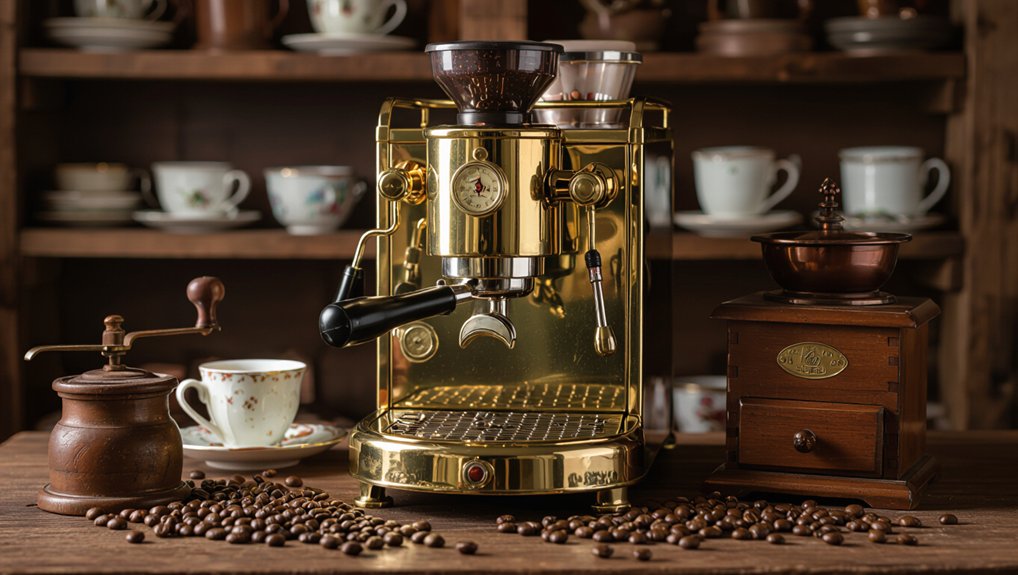
Although born into a family of entrepreneurs, Angelo Moriondo would become more than just another business owner—he’d revolutionize coffee brewing forever. His grandfather founded a liqueur company, while his father established Moriondo and Gariglio, a renowned chocolate business.
Working alongside his brother Agostino and cousin Gariglio, Angelo developed a keen entrepreneurial spirit that would soon transform espresso history. By purchasing the Grand-Hotel Ligure and American Bar, he gained intimate insights into the hospitality industry.
These experiences, combined with Italy’s burgeoning coffee culture, sparked Moriondo’s innovative vision to create a machine that could brew coffee faster and more efficiently than ever before.
First Steps: The Original Espresso Machine
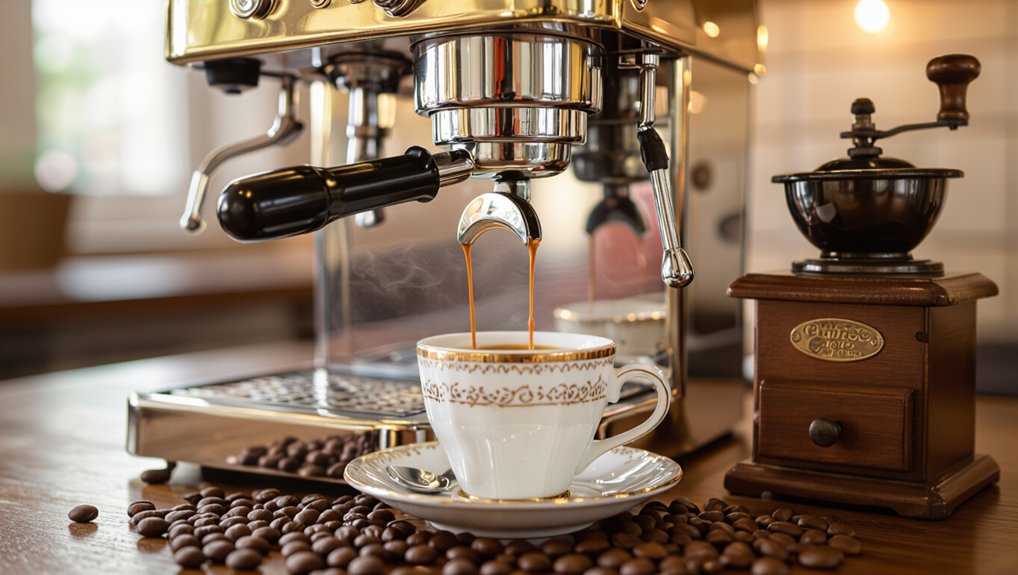
When Angelo Moriondo unveiled his groundbreaking espresso machine at the 1884 General Expo of Turin, he didn’t just introduce a new piece of equipment—he sparked a coffee revolution.
This first espresso machine was a marvel of steam-powered engineering, designed to brew coffee quickly and efficiently. Moriondo’s invention used steam pressure to drastically reduce brewing time, a radical departure from traditional methods.
Though he only created a few hand-built models for demonstration, his machine laid the crucial groundwork for modern espresso technology. His bronze medal at the expo recognized the machine’s innovative potential to transform how we enjoy coffee.
Technical Breakthrough: How the First Machine Worked
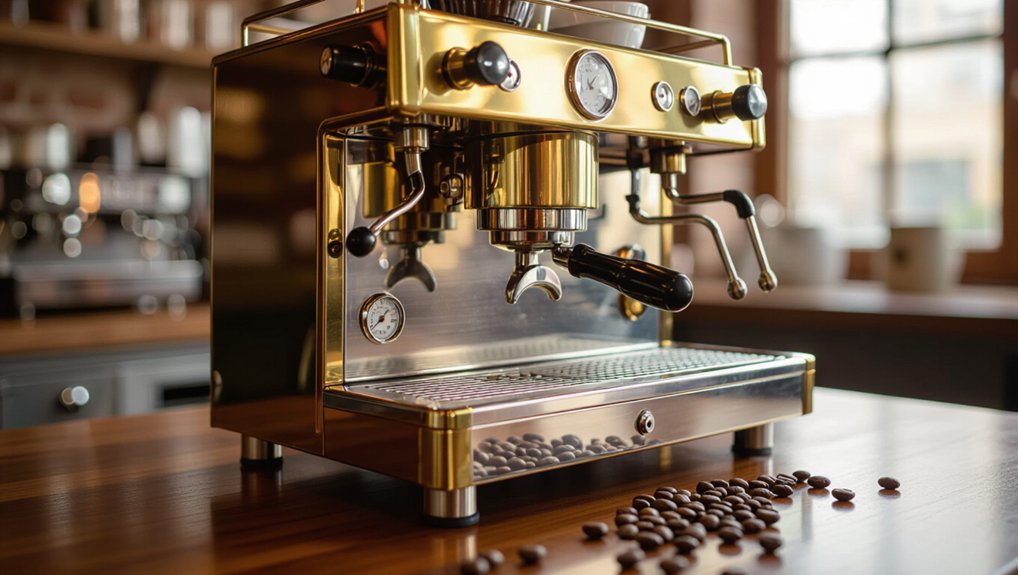
Because steam power represented a quantum leap in coffee brewing technology, Moriondo’s first espresso machines began with a groundbreaking approach to the brewing process.
By simultaneously controlling steam pressure and water supply, he created a device that could produce coffee in a fraction of the traditional time. His hand-crafted machine demonstrated how mechanical innovation could transform beverage preparation.
The key breakthrough was using steam to rapidly extract coffee’s rich flavors, drastically reducing brewing duration from minutes to seconds.
This ingenious method set the stage for future espresso machine development, marking a pivotal moment in coffee history.
From Invention to Recognition: Moriondo’s Legacy
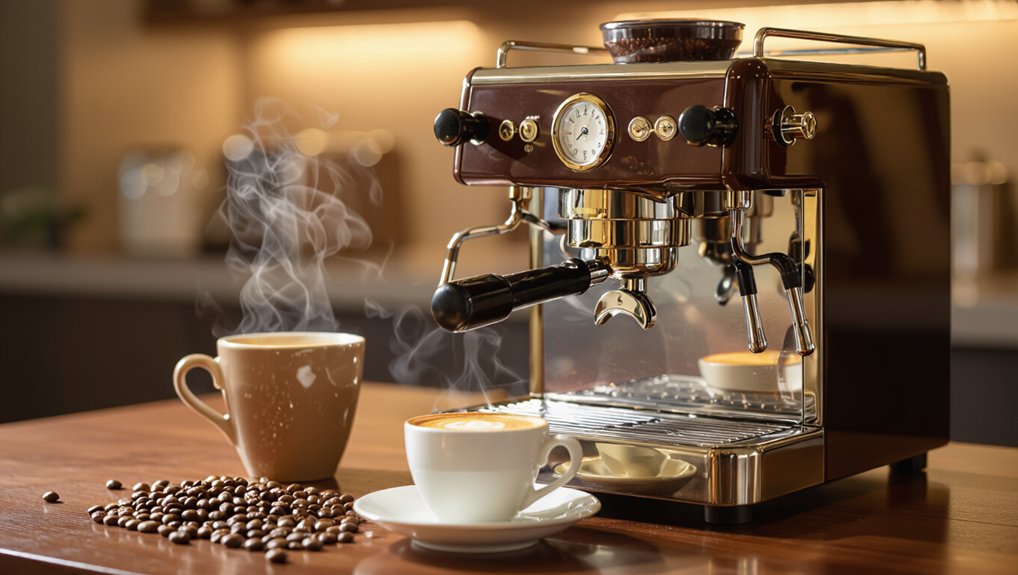
Despite his groundbreaking invention, Angelo Moriondo remained a relatively unknown figure in the coffee world for decades after creating the first espresso machine.
His innovative design, presented at the 1884 Turin Expo, earned a bronze medal but never reached industrial production. While Moriondo didn’t mass-produce his machine, he laid crucial groundwork for modern coffee culture.
Interestingly, his legacy was largely overlooked until recent years, when coffee historians and enthusiasts began recognizing his pivotal role.
The 2022 Google Doodle on his 171st birthday finally brought well-deserved attention to Moriondo’s remarkable contribution to espresso machine development.
The Evolution of Espresso: Beyond the First Machine
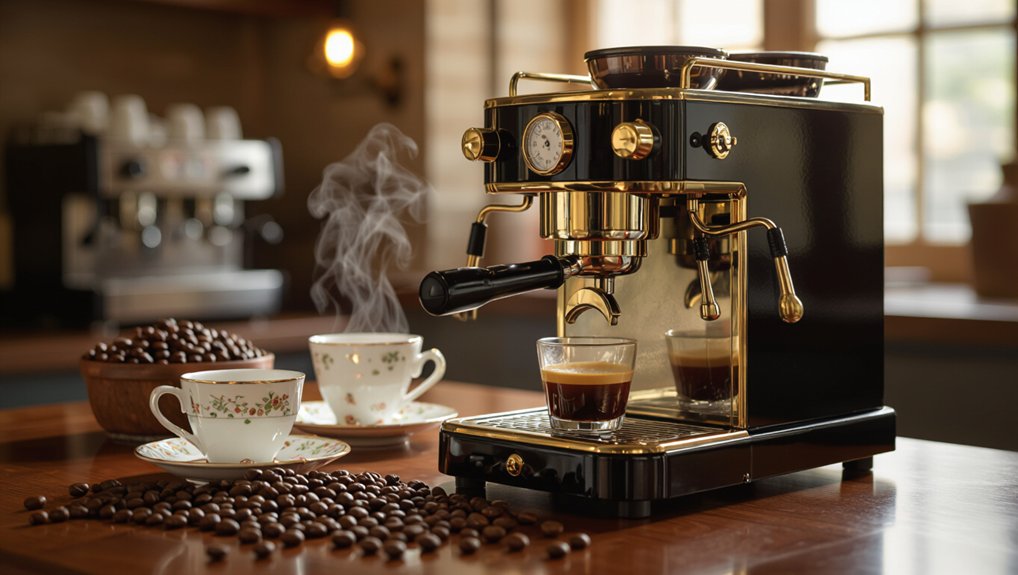
The journey from Moriondo’s pioneering steam-powered machine to today’s sleek espresso makers represents a fascinating technological evolution that transformed coffee culture worldwide.
Luigi Bezzera’s 1901 improvements introduced critical features like the portafilter, setting the stage for modern brewing.
Achille Gaggia’s lever-driven espresso machine in the late 1940s was a game-changer, dramatically increasing brewing pressure and creating the rich crema we now expect.
By 1961, the Faema E61’s motorized pump revolutionized efficiency, enabling consistent high-pressure extraction.
These innovations didn’t just improve machines—they fundamentally reshaped how we experience and appreciate espresso.
Pioneers Who Followed: Bezzera and Pavoni
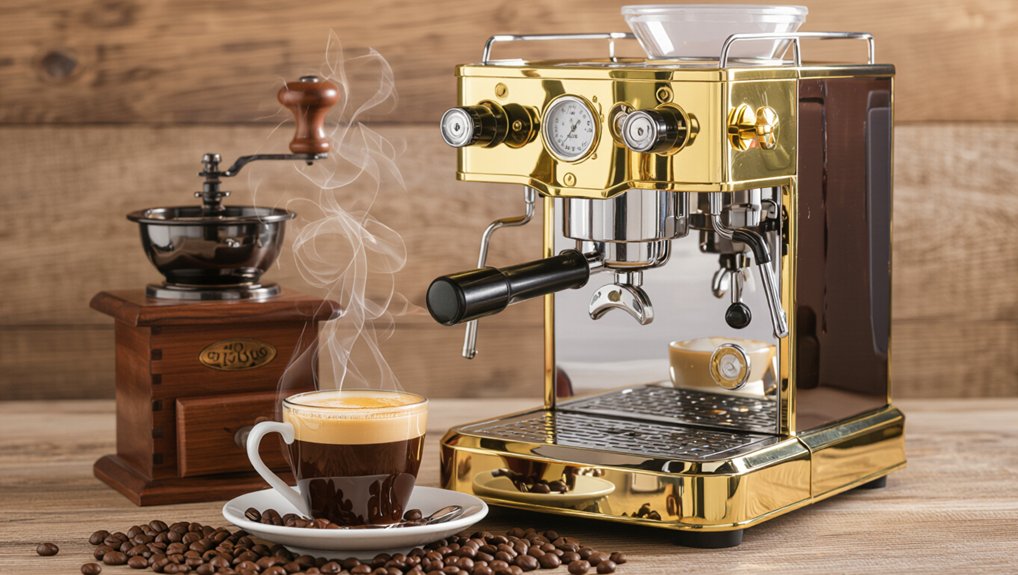
When you dive into espresso’s rich history, you’ll find Luigi Bezzera and Desiderio Pavoni as transformative pioneers who revolutionized coffee brewing in the early 20th century.
Bezzera’s 1901 patent introduced the portafilter, enabling rapid coffee brewing directly into cups.
Pavoni, who acquired Bezzera’s patents in 1903, was instrumental in commercializing espresso machines.
Together, they showcased the first caffè espresso at the 1906 Milan Fair.
Pavoni’s innovative steam wand and pressure release valve further enhanced espresso production, setting the stage for the modern espresso machine that coffee lovers now enjoy worldwide.
Cultural Impact: Espresso in Italy and Beyond
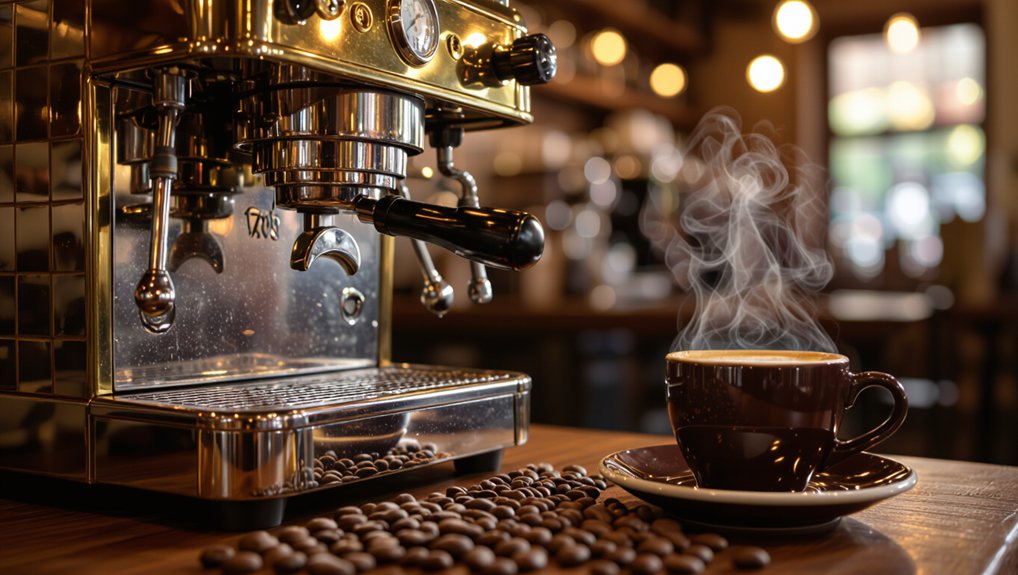
Because espresso transcends mere caffeine consumption, it has become a profound cultural touchstone that defines social interactions across Italy and beyond.
Italian espresso culture transformed post-World War II social landscapes, turning coffee bars into vibrant community hubs where locals connect quickly over swift shots. The coffee beverage isn’t just a drink—it’s a ritual, regulated by government pricing and consumed standing up, embodying the dynamic spirit of Italian social life.
As espresso spread globally, it reshaped how people experience coffee, creating new traditions and connections that extend far beyond its original Italian roots.
Global Spread: How Espresso Conquered the World
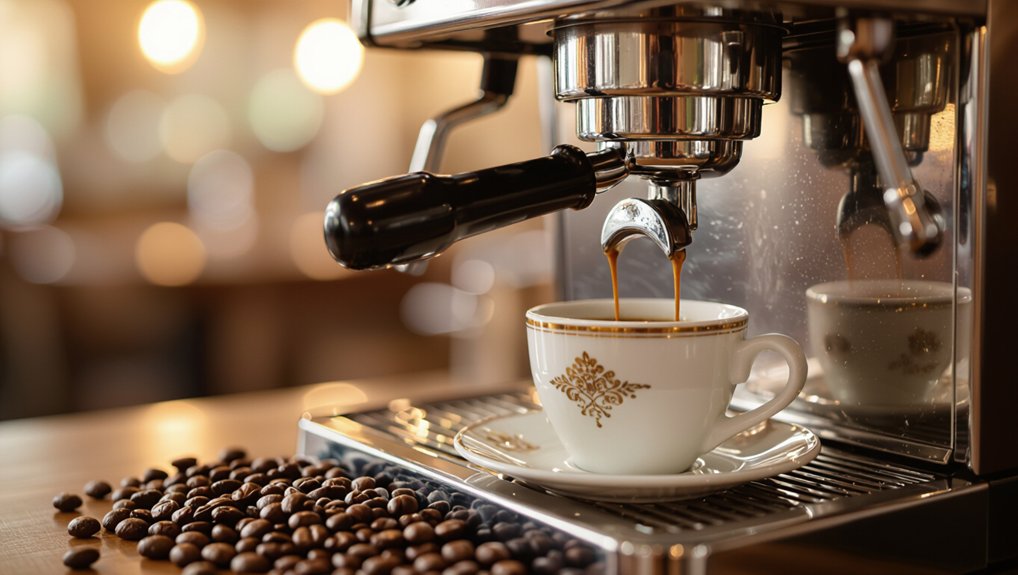
Caffeine’s global conquest began with a small, potent shot of espresso that would revolutionize coffee culture worldwide.
Italian immigrants first brought this concentrated coffee to America, nestling it within their communities before sparking broader cultural curiosity.
The post-World War II era saw returning GIs championing the rich, intense brew they’d discovered in Italy.
Beatnik coffee bars in the 1950s further amplified espresso’s appeal, transforming it from an ethnic beverage to a trendy cultural statement.
Modern Espresso: A Continuing Legacy
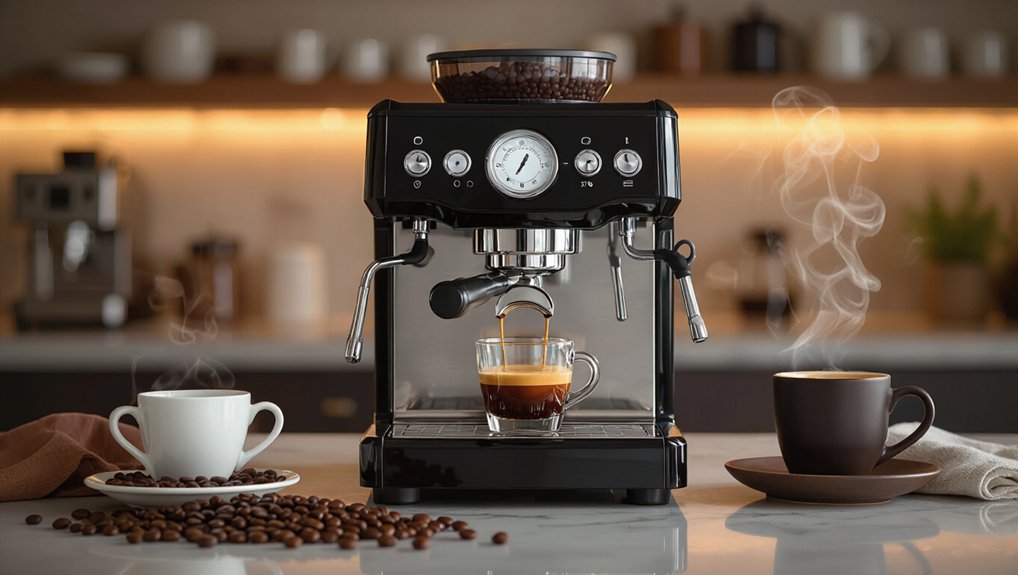
As espresso continues to evolve, it’s embracing both technological innovation and artisanal craftsmanship that honors its rich heritage.
Modern espresso isn’t just about speed—it’s a delicate dance between machine precision and human skill. The Four M’s guide today’s baristas, ensuring each shot captures complex flavor profiles.
Espresso culture has expanded beyond Italian cafes, with shops like Starbucks transforming espresso-based drinks into global phenomena.
Third-wave coffee movements have further elevated the craft, emphasizing high-quality beans and meticulous brewing techniques.
From lever machines to sophisticated pump systems, espresso remains a testament to continuous innovation and passionate dedication.
Frequently Asked Questions
Who Invented the First Espresso?
I discovered Angelo Moriondo created the first espresso machine in 1884, pioneering steam-powered coffee brewing technology at the Turin Expo and receiving a bronze medal for his groundbreaking invention.
Who Is the Founder of Espresso?
I’ll tell you that Angelo Moriondo is the founder of espresso. He patented the first espresso machine in 1884, creating a revolutionary steam-powered device that dramatically reduced coffee brewing time at the Turin Expo.
What Recent Invention to Prepare Coffee First Built and Patented in 1884?
I discovered Angelo Moriondo’s groundbreaking espresso machine, patented in 1884, which used steam machinery to quickly brew coffee. It was an innovative design that revolutionized coffee preparation, earning a bronze medal at Turin’s General Expo.
In What Country Was the First Espresso Machine Patented by Angelo Moriondo in 1884?
I can confidently tell you that Angelo Moriondo patented the first espresso machine in Italy in 1884. He created a groundbreaking steam-powered device at the Turin Expo that would revolutionize coffee preparation forever.
Conclusion
From Angelo Moriondo’s steam-powered invention in 1884 to the modern-day espresso machines pulling shots in cafés around the globe, espresso’s journey is a testament to human ingenuity, passion, and the pursuit of the perfect cup.
What began as a clever solution to slow brewing has become a cultural icon—one that energizes mornings, anchors social rituals, and inspires innovation even today. Every espresso shot carries within it the legacy of inventors like Moriondo, Bezzera, and Gaggia, whose breakthroughs continue to shape how we experience coffee.
So the next time you sip that rich, crema-topped shot, remember: you’re not just drinking coffee. You’re tasting over a century of history, craftsmanship, and a tradition that’s still evolving—one shot at a time.

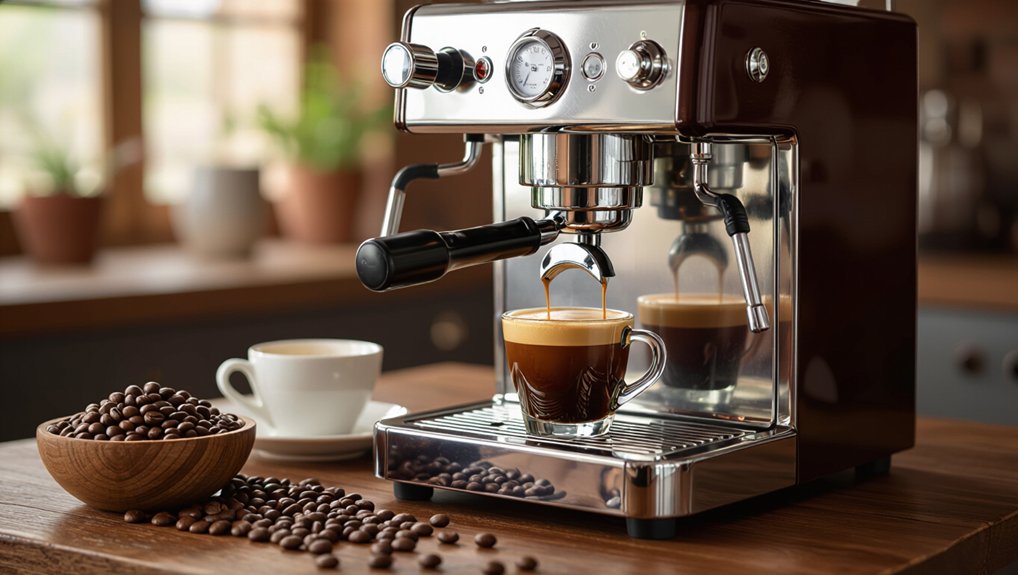
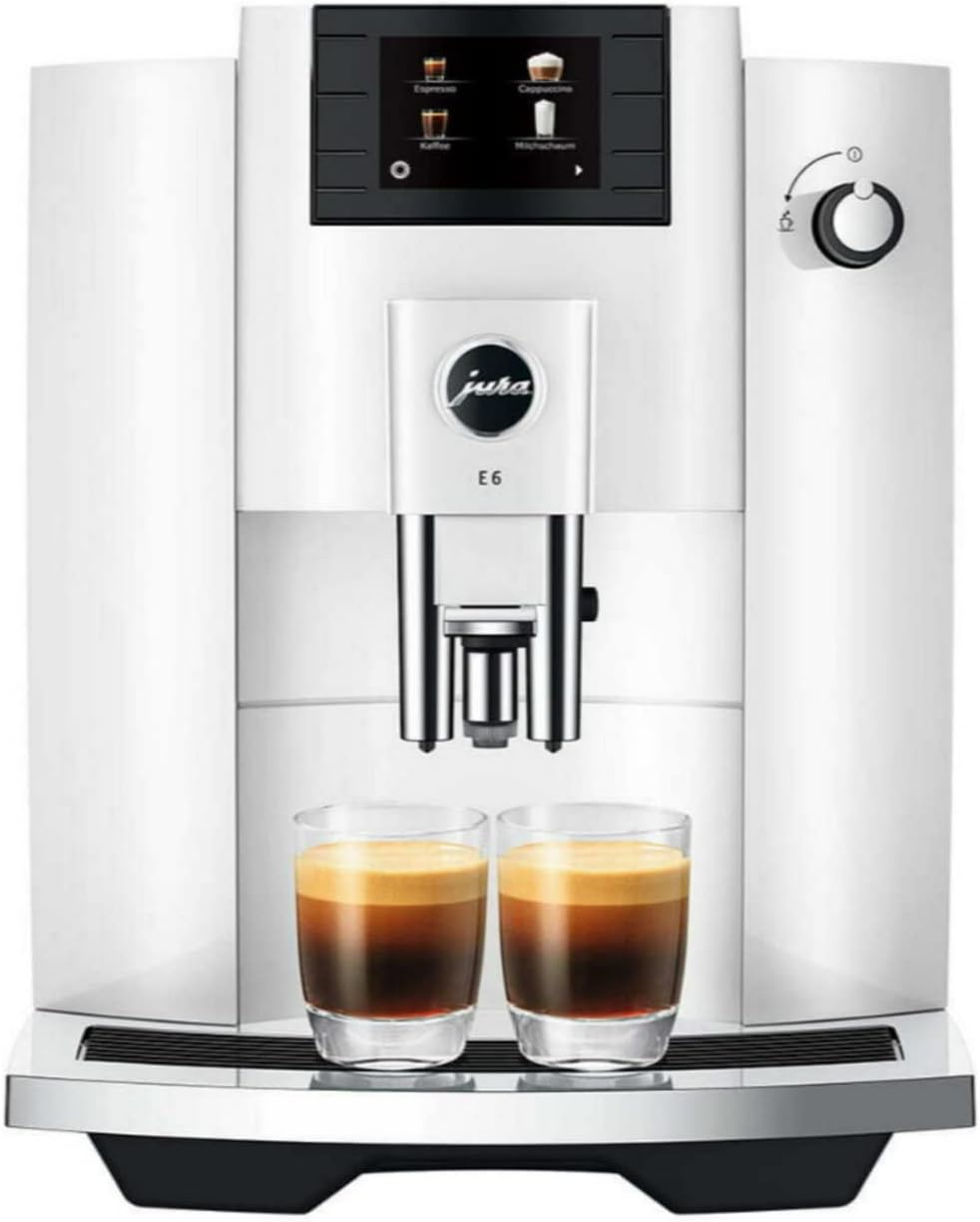
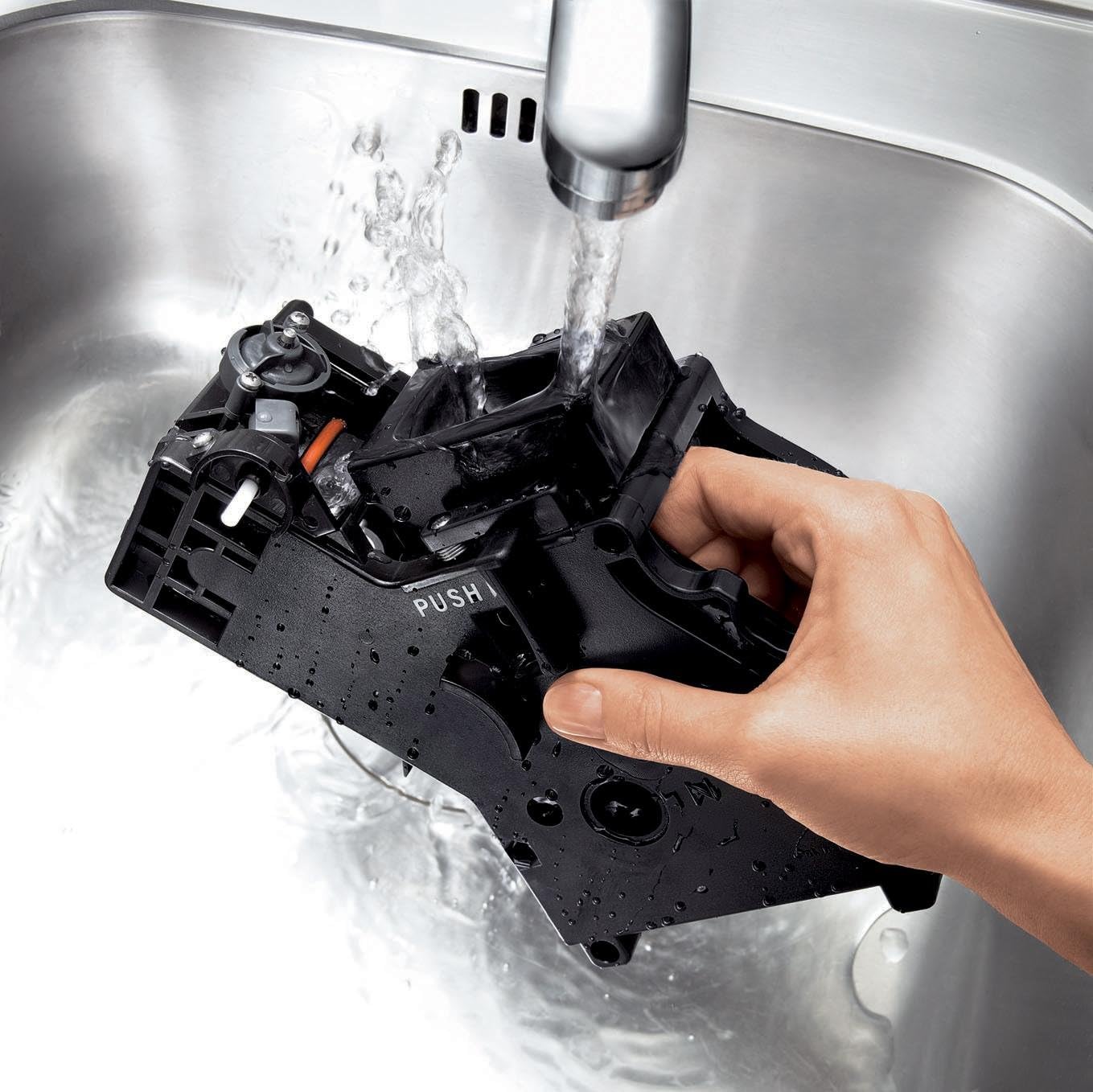
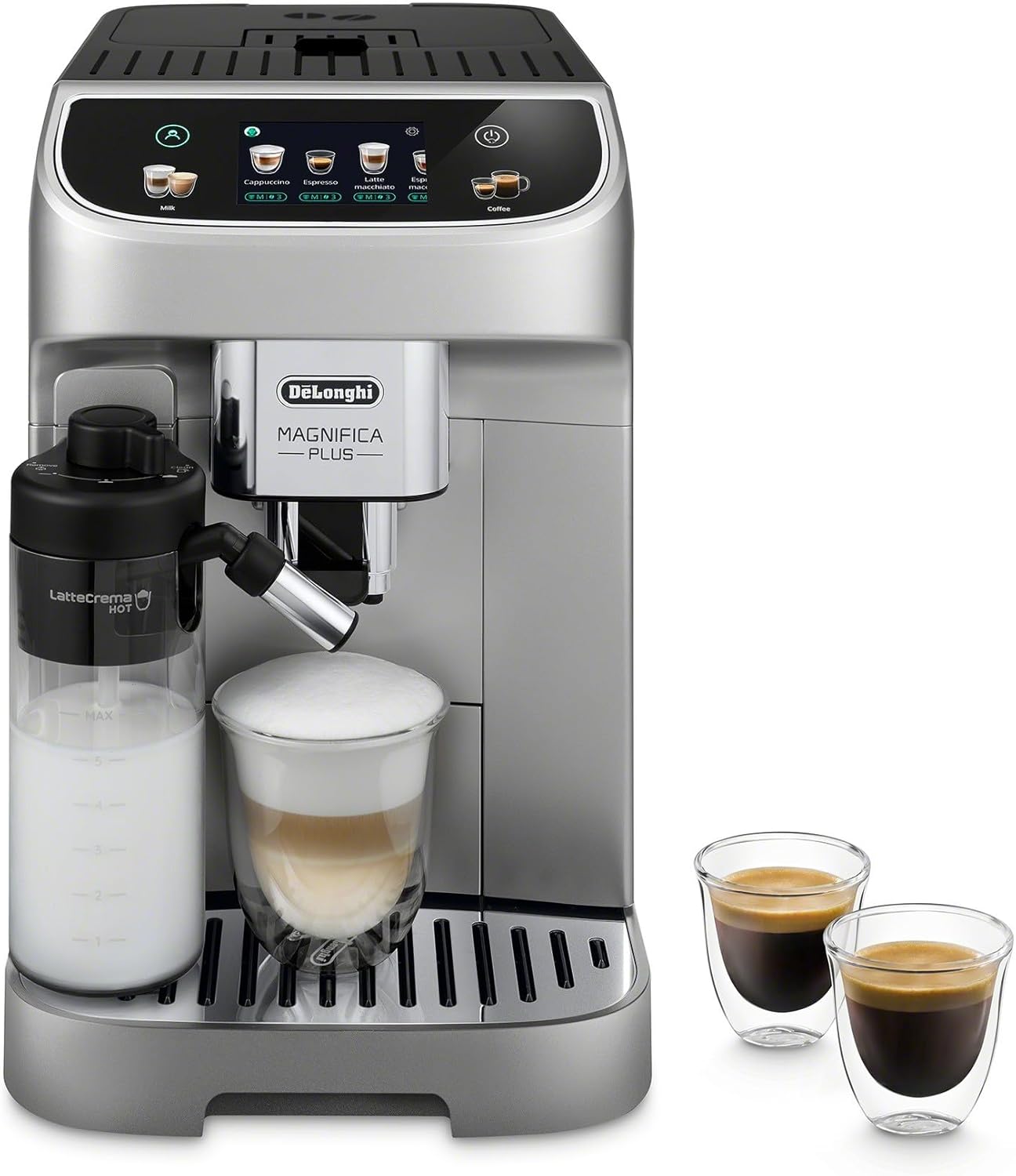
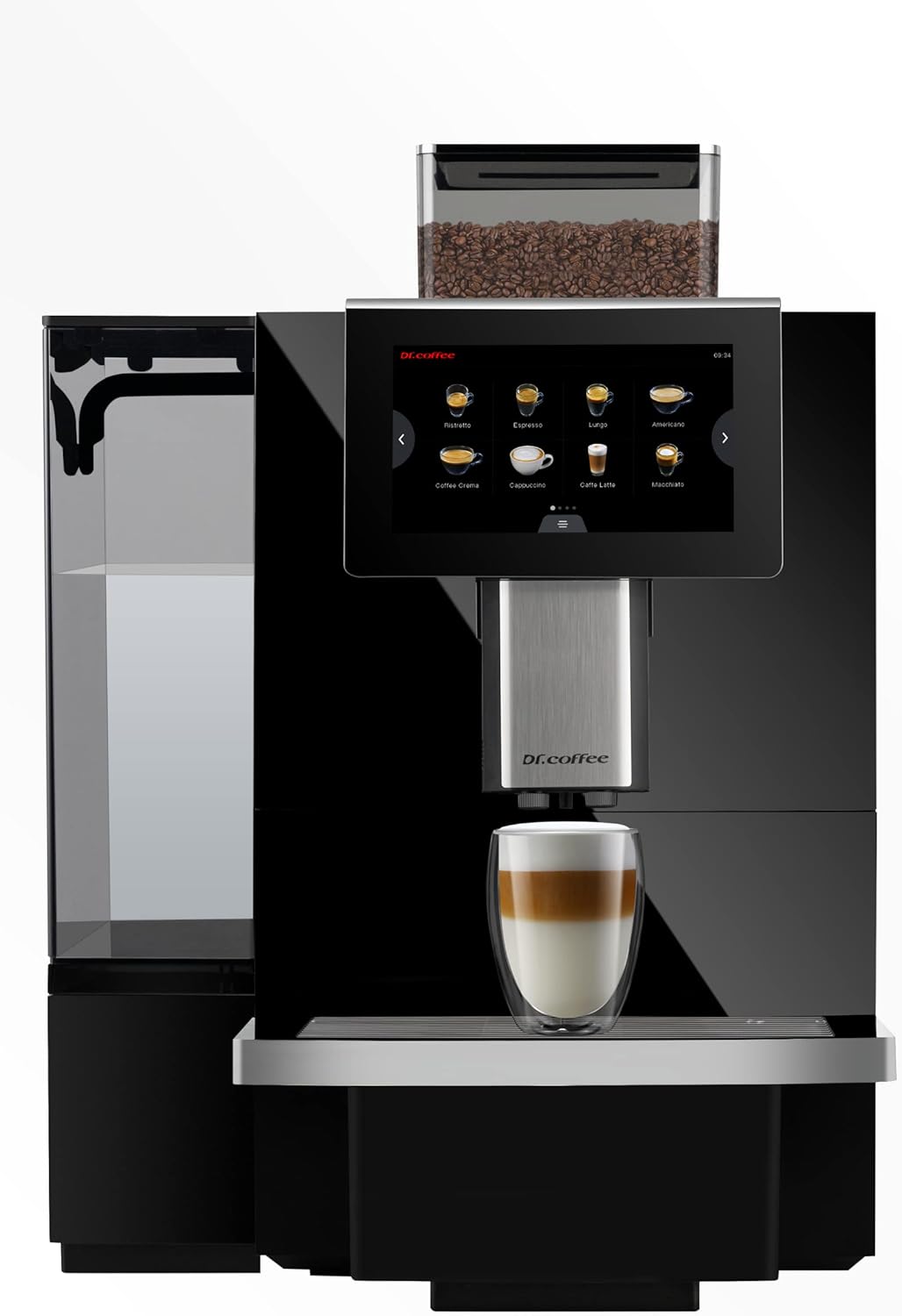

Leave a Reply
You must be logged in to post a comment.